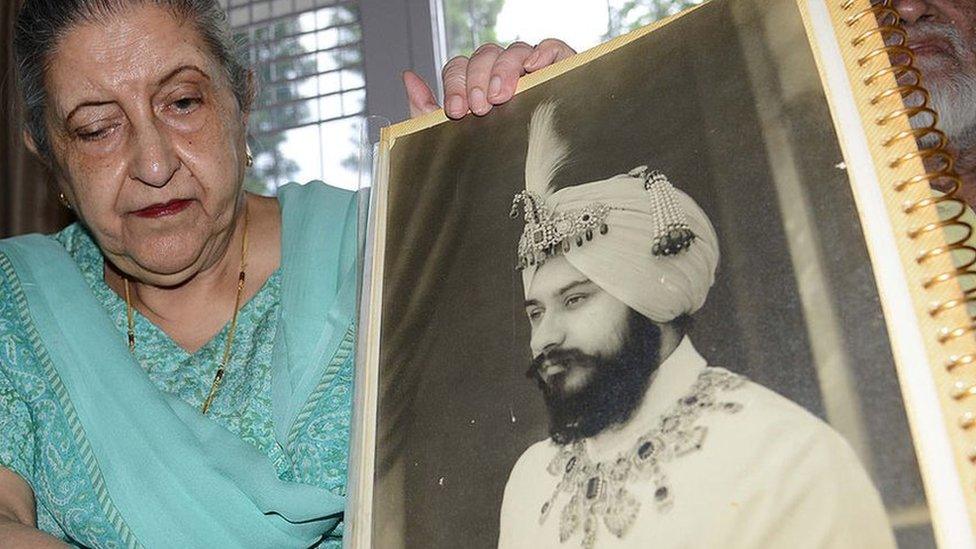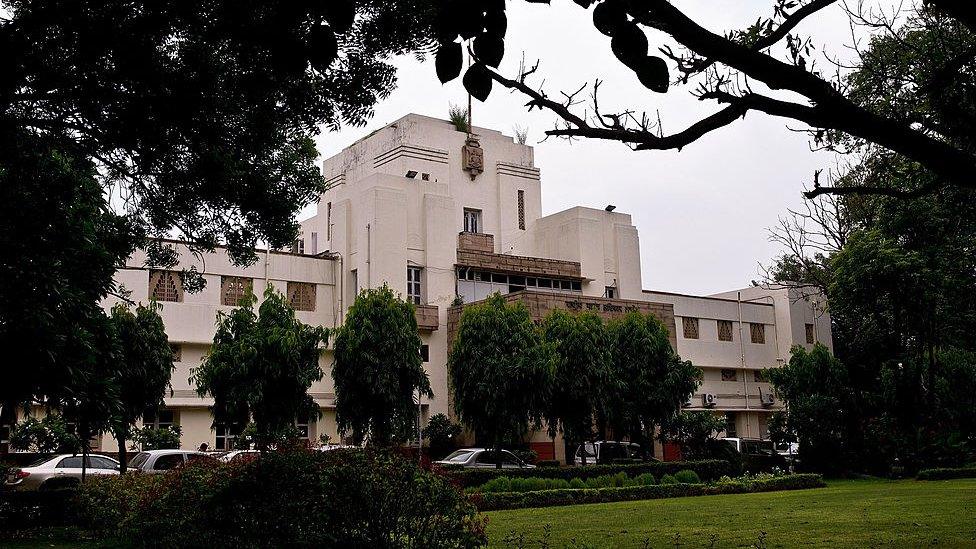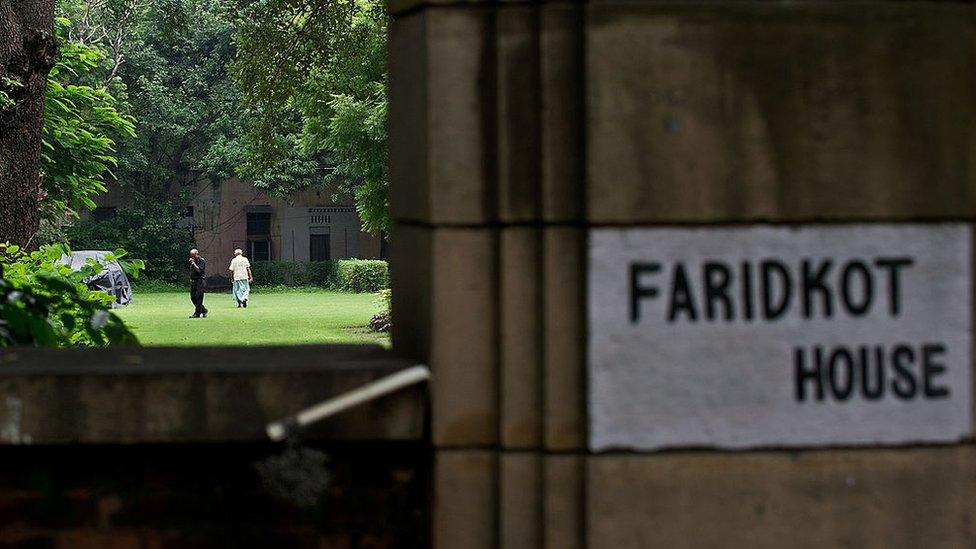Faridkot: An Indian maharaja and a 'mystery' will
- Published

Amrit Kaur with a photo of her father, Harinder Singh Brar
In September, India's Supreme Court brought the curtain down on a three-decade-old royal family feud over the ownership of properties worth more than 200bn rupees ($2.4bn; £2.3bn). BBC Punjabi's Arvind Chhabra reports on the twists and turns of the case.
The dispute erupted after the death of Harinder Singh Brar, the last ruler of the former princely state of Faridkot (now in the northern state of Punjab), in 1989. His eldest daughter had challenged the will - according to it, she didn't receive any share of the property.
The top court later said this will was "fictitious, fabricated and shrouded with suspicious circumstances" and awarded the major share of the property to two of Harinder Singh's daughters.
The journey to this moment involved years of legal tussle and at least three wills - including the now-discredited one.
The disputed will
In 1948, after India became independent, Harinder Singh - like the rulers of other erstwhile princely states - entered into an agreement with the government which allowed him to retain control over some of his assets.
This included hundreds of acres of land, forts, buildings, aircraft, vintage cars and money in the bank, all spread over the states of Punjab, Himachal Pradesh, Haryana and Delhi.
"The Faridkot ruler did a lot of development work, like in railways and building hospitals," says historian Harjeshwar Pal Singh, adding that both Harinder Singh and his ancestors had a good relationship with the British.

The riches at stake included valuable properties spread across three states
Harinder Singh and his wife had four children - a son and three daughters.
Only the eldest daughter, Amrit Kaur, is alive now. Two of his children - Tikka Harmohinder Singh and Maheepinder Kaur - died without leaving any heirs.
In 1950, Harinder Singh executed his first will, which mentioned assets including four flats and money in some bank accounts - these were to be divided equally between his three daughters.
Two years later, he made a second will, which said he did not want to leave anything to Amrit Kaur. Instead, the assets would be shared between the two other daughters.
The Supreme Court's order says that the reason for this appeared to be that "the eldest daughter had married against the wishes of the father".
Three years later, the former king executed another legal deed - a registered settlement - in London which did not disinherit Amrit Kaur.
According to this, she would only receive her share of the property after she turned 25 or legally separated from her husband, whichever came first.
But after his death, Amrit Kaur - who had reconciled with her father by then - got a shock when a third will was read out.
This one was dated 1 June 1982, a few months after Tikka Harmohinder Singh's death in a road accident.
This document said that all of the property would be managed by a caretaker trust, with the trustees including her two sisters and a relative of Harinder Singh's mother.
Court battles
In 1991, Amrit Kaur challenged the will, claiming a third's share of the properties. Her sisters Deepinder Kaur and Maheepinder Kaur and the other trustees were named as parties to the suit.
But that wasn't all. Harinder Singh's younger brother, Kanwar Manjit Inder Singh, also filed a case, arguing that he was entitled to the estate as the closest surviving male relative.
In 2013, a trial court ruled on both the suits. It said the third will was not genuine and that Amrit Kaur was entitled to a half share of all the properties along with Deepinder Kaur (Maheepinder Kaur had died in 2001).

Now the family has to divide the properties
Jassi Anand, a forensic expert engaged by Amrit Kaur, told the BBC that they had thoroughly studied the third will to establish that it was not made by the former king.
"The king was a learned man and had a beautiful handwriting. But that didn't reflect in his purported will which had so many mistakes in spellings, and his signatures had been forged," she said, adding that different typewriters had also been used to make the will.
The trial court also rejected Kanwar Manjit Inder Singh's claim to the estate.
The trust members, Deepinder Kaur and Bharat Inder Singh - Kanwar Manjit Inder Singh's son - appealed against the decision.
In 2020, the Punjab and Haryana high court upheld the trial court's decision and said that the third will was fabricated.
It also rejected the former king's brother's claim but said that he was entitled to a 25% share in the property - this was because their mother only died in 1991, two years after Harinder Singh.
In September, the Supreme Court upheld the high court's order and ordered that the trust - which had been administering the properties until now - be immediately dissolved.
The rest of the assets will now be divided between Amrit Kaur and the family of Deepinder Kaur, who died in 2018. The police is investigating the fake will.
What happens now?
Now the family needs to divide the property according to the share decided by the court.
One way is for them to sit together and jointly decide who gets what property.
The other option is execution in the court - but this, says Amarinder Singh, the grandson of Kanwar Manjit Inder Singh, would be time-consuming.
"At least the family feud is over," he says.
"But the litigation will carry on since we have a lot of properties, many of these in far-flung areas."

Read more India stories from the BBC:
